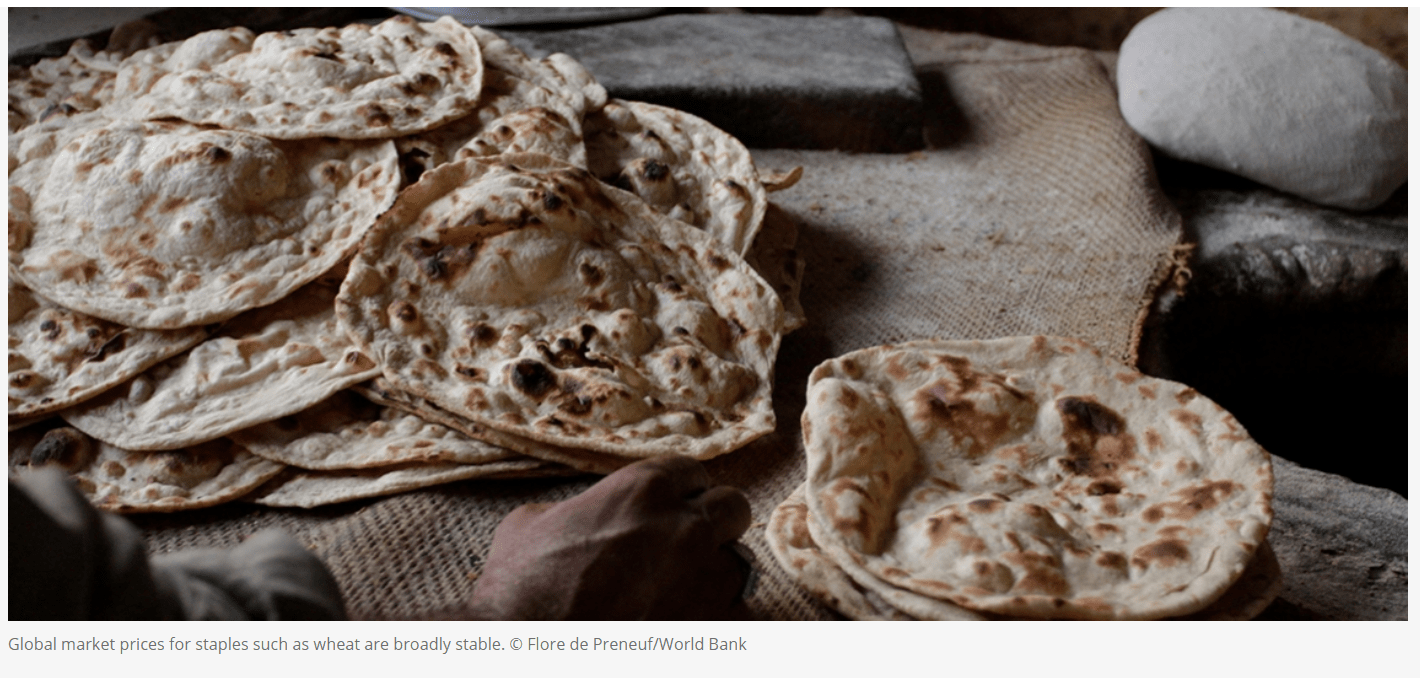Amid much terrible news tied to COVID-19 comes one positive forecast: World agricultural commodity prices are stable and are expected to remain so in 2020 , as production levels and stocks of most staple foods are at or near record highs.
The World Bank’s Commodity Markets Outlook comes with large caveats including uncertainty over the pandemic’s duration and severity; the direction of energy and fertilizer prices; currency movements; changes to trade and domestic support policies; and possible disruptions in global supply chains. At a regional level, the worst locust outbreak in decades has hit 23 countries in Africa, the Arabian Peninsula and South Asia, devastating crops on which millions depend.
Mitigating these risks requires concerted action. Rice prices trended upward in recent weeks due to drought conditions prior to COVID-19 and limiting trade measures, but came down in recent days thanks to the efforts of countries like Vietnam – the world’s third-largest rice exporter – which lifted its temporary export ban.
This matters not only because a large share of rice consumed in Africa is imported, but also because past experience shows export restrictions can lead to rapid escalations in world food prices that affect poor countries the most. This was the case during the 2007/2008 food price crisis, when as many as one-third of the world’s countries adopted trade restrictions and the number of poor people increased by 150 million.
It remains crucial to be vigilant which is why the World Bank joined G20 agricultural ministers and called on policymakers to refrain from imposing export restrictions. The message is resonating, with countries of the G20, Latin America and the Caribbean, African Union and ASEAN all signaling their positive intentions.
The world is facing unprecedented challenges today that require urgent, country-specific responses.

Hunger has remained shockingly prevalent in recent years. According to the United Nations Food and Agriculture Organization, 820 million people were already undernourished before today’s crisis – including 135 million people experiencing acute food insecurity. As incomes fall, we are already hearing reports of people skipping meals. This wave of malnutrition will have long-lasting impacts on human capital, especially for children.
There are plenty of new obstacles to food production, transport and consumption. Pests and disease outbreaks such as locusts and African Swine Fever as well as droughts compound the COVID-19 challenge, prompting the World Food Program to predict a doubling of acute food insecurity by the end of the year. To understand the magnitude of the challenge, we need to look at the food supply chain and assess constraints at the country and local level.
Farmers must be able to plant and harvest. They need access to and financing for inputs like fertilizer and seeds. They will also need labor resources. Measures to stop the spread of coronavirus are impeding the movement of migrants who perform farm work in many countries. Allowing worker movement, enforcing new safety protocols, and supplying workers with adequate protection will be critical in the months ahead. This is important in developing countries where agricultural production is more labor intensive, morbidity and movement restrictions can have larger impacts.
Produce needs to reach the market. Food and related inputs and services need to be defined as essential goods so transport is prioritized to overcome the strictures of lockdowns. Truckers need more than a green light to keep working. They need mechanics and related services to keep delivering food to markets. The same goes for agricultural inputs. The continued flow of seeds, fertilizer and mechanical parts – often across borders – will be crucial in the next six to 12 months. And we need to recognize the myriad of businesses including small and medium enterprises, often informal, that supply farmers and handle food from farm to fork, and devise policies to keep them afloat.

It’s important to not only ensure people access basic food supplies, but also that they have money to purchase them. On average, food accounts for up to 60 percent of household expenditures in low income countries and 40 percent in emerging and development market economies. Economic recession and loss of livelihoods quickly erode the food security of millions of people – especially if food prices increase. The World Bank estimates that 40 to 60 million more people will be living in extreme poverty in coming months, depending on the scale of the economic shock.
Therefore, social safety nets for the poorest and most vulnerable are needed as part of the immediate and next phase of COVID-19 emergency assistance. Many countries are using social safety nets to respond. However, much more needs to be done to compensate income losses and support businesses and promote economic resilience. In poorer countries, social safety nets and inclusion programs remain limited in budget, coverage, benefit levels and flexibility, and need to be significantly scaled up to respond to a crisis of this magnitude.
Given the urgency of this challenge, countries’ limited resources, and that a large percentage of the labor force and informal sector are agricultural and food producers as well as net consumers (in some of the poorest countries up to 80%), it makes sense to prioritize agriculture and food sectors in designing assistance programs. This will mean we are putting money in people’s pockets so they don’t go hungry, and making sure food keeps moving.
Originally published by Thomson Reuters Foundation.
Mari Elka Pangestu is Managing Director of Development Policy and Partnerships at the World Bank
